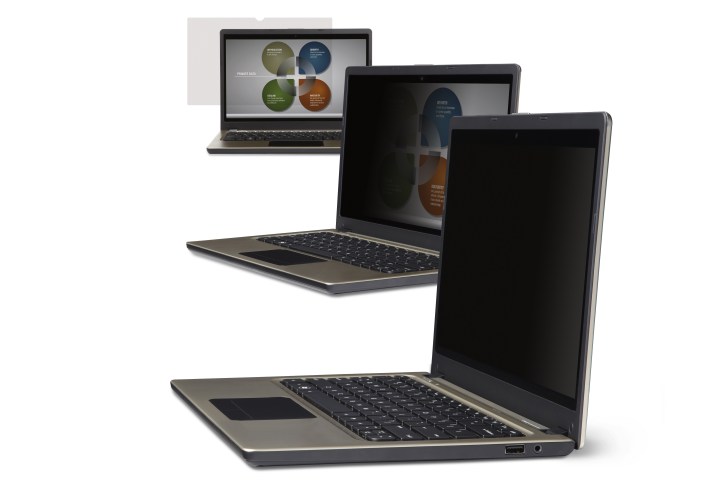
The reflective technology works by altering the ability to view your main display, but at the same time allowing you to sit in front of the screen as usual and continue working away as if nothing had changed. If anyone tries to view from an angle greater or less than 90 degrees, though, they won’t be able to see anything. And now those privacy screens are going to be integrated into select HP laptops.
“With more and more PCs being used in public places, visual hacking — the act of collecting confidential information by looking at someone else’s screen — is a paramount security risk in today’s business environment,” said Alex Cho, vice president and general manager, Commercial PCs, HP. “We’re working with 3M to deliver world-class solutions that not only protect the privacy of the individual user, but also provides security for valuable company assets.”
Related: Are screens scrambling our kids’ brains? We asked an expert
It’s not made clear which laptops will have the integrated privacy screen in their display, or how users will “turn on” the functionality. Neither HP or 3M have announced when these notebooks might be released either, or whether incorporation of the feature will affect the price of the hardware it is applied to.
The real question though, is: is this a feature that you would be willing to pay for? Have any of you guys used a 3M privacy screen in the past? If so, what did you think? Is it something we all need?
Editors' Recommendations
- Why Apple’s M3 Ultra could be an absolute monster
- Why gaming on the M3 MacBook Air has left me impressed
- Everyone who should (and shouldn’t) buy the M3 MacBook Pro
- These are the best games to play on your new M3 Mac
- Here’s why people are raising concerns about the M3 Pro MacBook Pro




